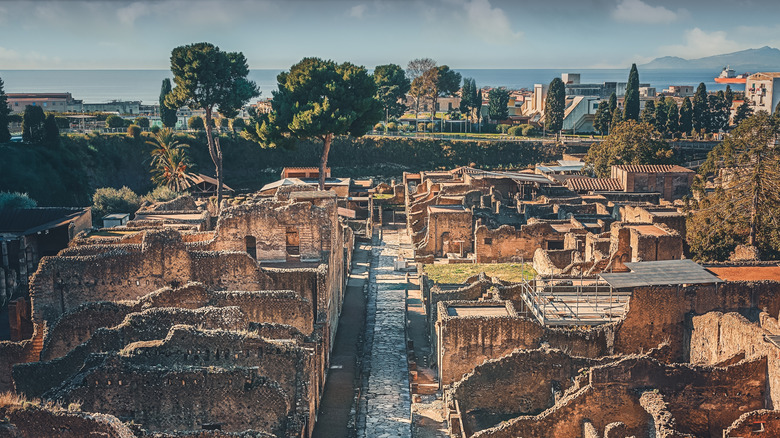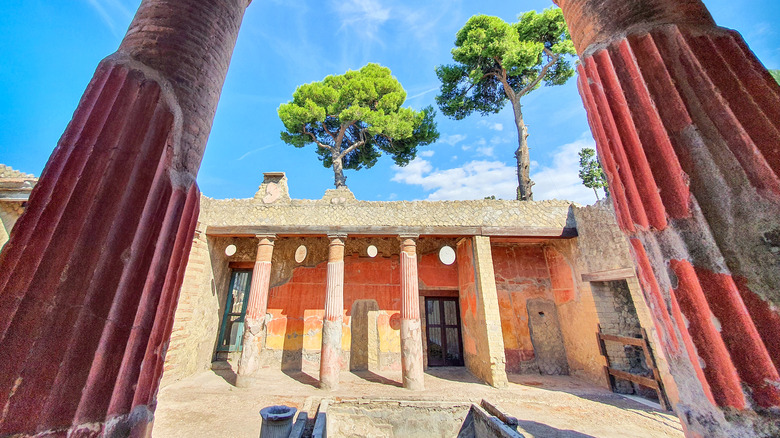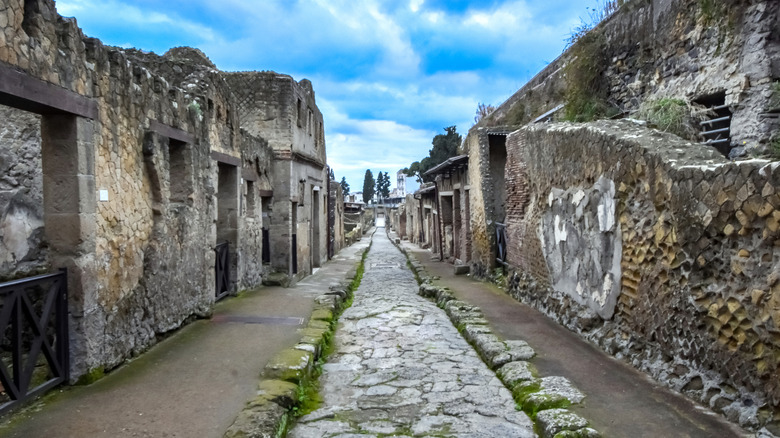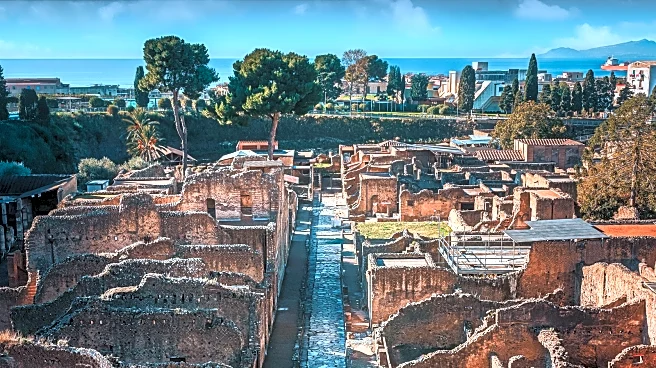
The story of Pompeii is one that most people know. Pompeii, a thriving Roman city in what is now Southern Italy, was dramatically buried in ash during a devastating eruption from nearby Mount Vesuvius. While this is certainly not the first time in history such an event occurred, the quickly hardened ash was able to preserve Pompeii to an astounding degree, keeping it intact as a time capsule into Roman life in 79 A.D., at the moment in time the eruption occurred. Pompeii gives us incredible insight,
hence why it's one of Italy's most visited attractions.
However, this means that Pompeii gets busy, leading savvy travelers to ask: Is Pompeii a tourist trap or a must-see on your vacation to Italy? That'll be up to you, but there is a viable alternative: the nearby Herculaneum. Herculaneum is the "forgotten Pompeii," as it was also a thriving city wiped out in the same volcanic eruption, but it receives much less attention than Pompeii. However, just like Pompeii, Herculaneum was "destroyed and yet preserved by Mount Vesuvius" (via UNESCO). Most visitors overlook it, and therefore it's less crowded. It's also a much smaller, more intimate, more accessible site.
If you're still unsure which to choose, user ImaginationEven8158 notes on the Naples-centric subreddit r/Napoli: "If you're short on time, Pompeii is bigger and more famous, but Herculaneum is smaller, better preserved, and less crowded. Pompeii gives you more ruins and a bigger experience, while Herculaneum offers a quieter, more detailed look at life before the eruption." On the subreddit r/travel, user DiscordDucky recommends "visiting Pompeii first because you will be in awe! Then go visit Herculaneum to be blown away ... I can't express enough how much more epic Herculaneum is, but you need to start with Pompeii to really understand that."
Read more: The Most 'Overtouristed' Places In Europe
Herculaneum: The Forgotten Pompeii

In August of 79 A.D., the ancient Roman towns around Mount Vesuvius were engulfed in ash, poisonous gases, and volcanic mud for over three days. While Pompeii had little warning before the ash came raining down, Herculaneum was covered in slower-moving volcanic mud, and therefore had more time to (theoretically) escape. However, experts still estimate that nearly all of the town's some 5,000 residents perished, many while trying to flee.
Herculaneum, at the time, was a vibrant seaside resort town, patronized by many of Rome's elite. The elegant villas, apartments for laborers, beautiful temples, and city streets were sealed under nearly 60 feet of dense mud, which preserved everything from wood to fabric and even food. One particularly poignant section of Herculaneum is the Greek port, where hundreds of people succumbed while awaiting rescue. On the beach, a preserved Roman ship was discovered, with skeletons of the rower and a soldier, along with a sword and a purse, still full of coins.
The magnitude of preservation at Herculaneum doesn't stop there. The gorgeous Villa dei Papyri was home to dozens of intact Greek manuscripts, and many of the remaining villas feature frescoes and mosaics that look the same as they must have 2,000 years ago. Herculaneum is also where the first intact Roman skeletons were found, giving even more valuable insight into the ancient Roman world.
Discovered in 1709, not long after Pompeii, Herculaneum has been excavated for just as long, although much less of it has been unearthed. This is partly because most of ancient Herculaneum is buried beneath Ercolano, a modern-day Italian city, making excavation much more difficult. However, this also makes Herculaneum more intimate and easier to explore in a shorter visit.
Tips For Visiting Herculaneum

Herculaneum is about two and a half hours of Rome by car –– making it one of the easiest and most incredible day trip destinations from Rome. However, if you have the time, combine your visit with Pompeii or at least the Naples National Archaeological Museum, where the most important artifacts from both Pompeii and Herculaneum are on display. On r/Napoli subreddit, user Jamianb notes: "The museum has lots of artifacts from both cities and really helps bring things to life." Even without a guide, Herculaneum can be visited in several hours or less, and the incredibly intact city is truly jaw-dropping.
When visiting with small children in a stroller or wheelchair, it can be challenging to navigate the rocky, ancient roads. Use an infant carrier for the youngest ones, and those on wheels can encircle the site on a walkway that follows the perimeter, which provides some stunning views of the ruins from above. The Virtual Archaeological Museum (MAV), just a few steps away, provides a chance for visitors to experience what life was like in Herculaneum before the eruption through an interactive tour.
Herculaneum is a short walk (about 6 to 8 minutes) from the Ercolano Scavi rail station, which is a 15-minute train trip from Naples and 1.5 hours from Rome. It's also under an hour from Sorrento, one of the most gorgeous towns along the renowned Amalfi Coast, if you require some limoncello and sunshine after your venture back in time. And Herculaneum is just the start of archaeological adventures in Italy. Grab your snorkel and head off the Amalfi Coast to Baia, the "submerged Pompeii," one of the few underwater parks in the world.
Ready to discover more hidden gems and expert travel tips? Subscribe to our free newsletter for access to the world's best-kept travel secrets.
Read the original article on Islands.

